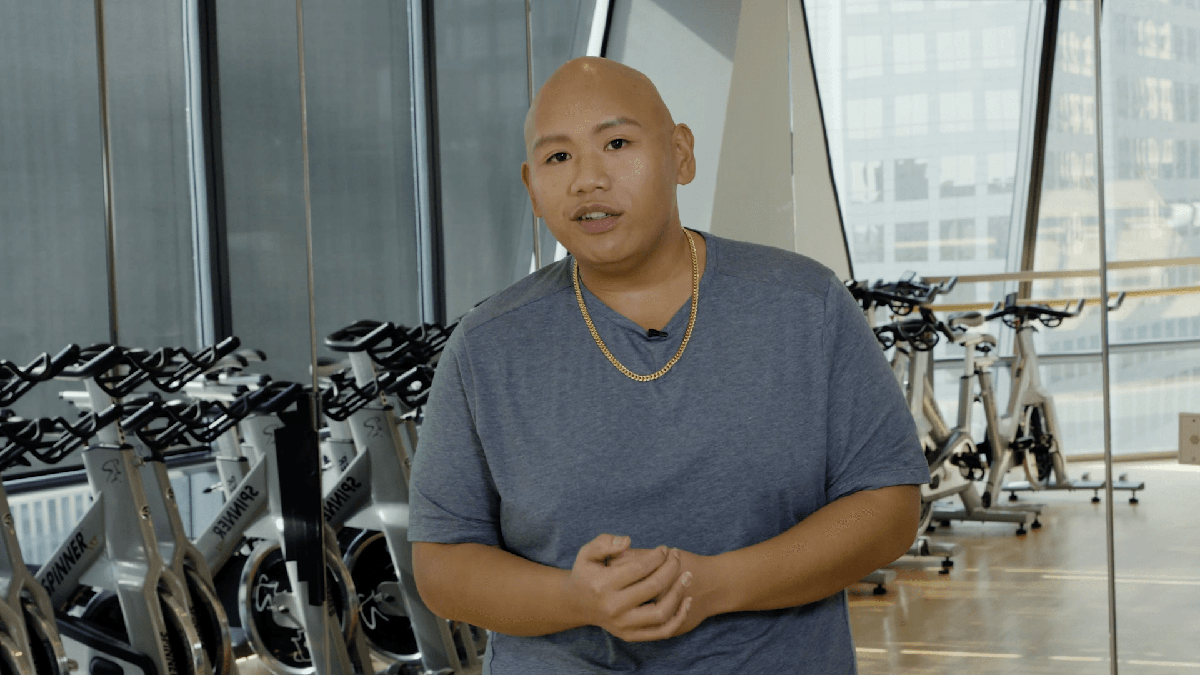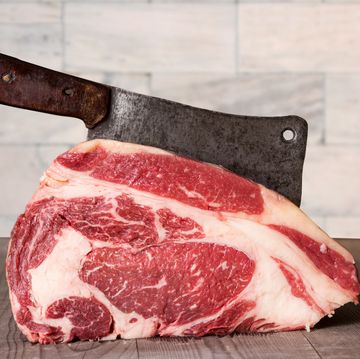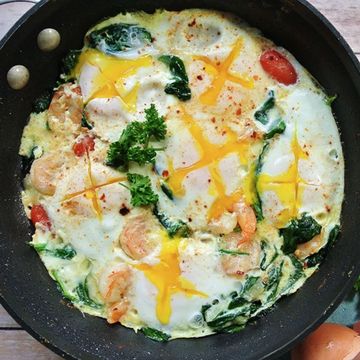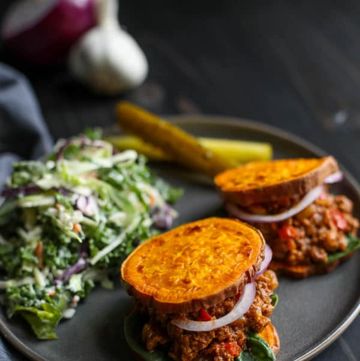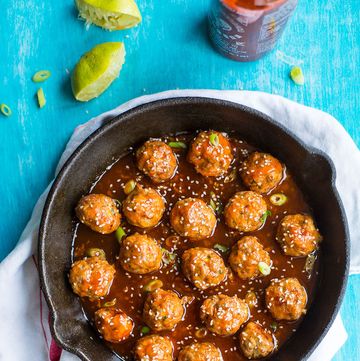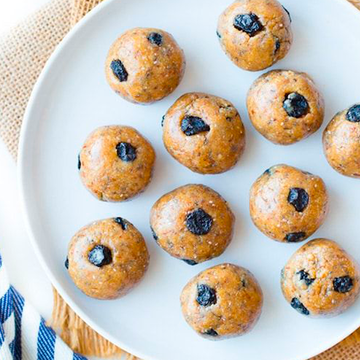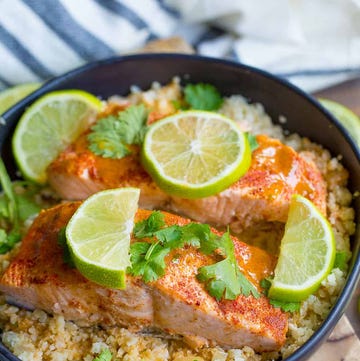What do you get when you cross the popular paleo diet and a vegan?
No joke, you get the pegan diet, an eating plan that counts among its many followers and handful of celebrities and at least one legendary quarterback.
The pegan diet, created by Dr. Mark Hyman in 2014, combines aspects of both paleo and vegan approaches to eating. Hyman claims that the pegan diet is the best way to maintain muscle, lose fat, feel good, and stay healthy. It’s also easier to stick to than a vegan diet because you can still consume animal products, meaning you aren’t that limited in what you can’t eat.
Plus, it's healthy for the planet in terms of sustainability, Hyman argues.
But, hold up, how can a diet be both vegan and then also include meat? And isn't the paleo diet super-restrictive, which would mean that blending in elements of begin vegan—which is also a hyper-restrictive lifestyle—would make pegan super-super restrictive?
There's a lot to unpack about the pegan diet, which is why we analyzed the diet’s claims, reviewed the scientific research, and then tried our best to reconcile the two.
The good news is that the pegan diet isn't all bad. But while pegan does have some benefits, the diet probably won't work for everyone, and there are a few major drawbacks to the eating plan from both a scientific and practical, everyday point of view.
Here's everything you need to know about the pegan diet, including if the plan can help you lose weight and if it's healthy for you.
What Is the Pegan Diet?
Pegan is a mash-up of paleo and vegan.
On the diet, you can eat whenever you want and as much of anything as you want—as long as you’re filling your plate with 75 percent plant-based foods and 25 percent sustainably raised animal products. (So, yeah, not really vegan.)
Mark Hyman, M.D., developed the diet—and wrote a best-selling book about it.
The eating plan incorporates principles from paleo and vegan. If you're unfamiliar, paleo emphasizes eating meats, fruits, and vegetables, and restricts grains, legumes, dairy, potatoes, refined vegetable oils, and alcohol.
Vegans restrict food from animals, which includes unsuspecting items like gelatin, omega-3 fortified foods, and honey.
On the surface, the two seem pretty different, but they do share one thing in common: fresh fruits and vegetables.
"It’s just taking the things that are good from the paleo diet and taking the things that are good from the vegan diet and putting them together," says Wesley McWhorter, R.D. and chef at UTHealth School of Public Health.
What the Pegan Diet Promises
Dr. Hyman says his pegan diet can reduce inflammation, prevent chronic disease, and promote weight loss while also taking care of the planet. Because you can still eat meat, fish, and eggs on pegan, you don’t have to worry about protein intake, a common concern with a vegan diet.
What You Can Have on the Pegan Diet
The bulk of your meals will consist of fruits and vegetables since Hyman recommends making plants 75 percent of your plate.
Meat should be treated as a side dish instead of the main course. Here's a full list on what you can eat:
- Healthy fats (think omega-3 fatty acids, nuts, coconut, and avocados).
- Fruit and vegetables
- Nuts and seeds
- Gluten-free whole grains
- Lentils for those who can't give up legumes
- Grass fed, sustainably raised animals (fish, beef, pork and chicken are OK in moderation)
- Sugar is an occasional treat
What You Can Have on the Pegan Diet
Quite a lot, actually: nonorganic produce, vegetable oils, dairy (except for organic sheep or goat milk), gluten, more than a half cup of cooked grains or legumes daily, and soy, plus MSG, artificial sweeteners, additives, preservatives, and dyes.
Whew.
What's Good About the Pegan Diet
Eating more plants is always beneficial.
Fruits and vegetables house disease-fighting antioxidants as well as fiber, which helps you stay full and feeds good gut bacteria.
Also nice: There are no calorie or macronutrient (fat, protein, carbs) restrictions on the pegan diet, and—grains and legumes aside—you don’t have to measure portions, which is just annoying.
McWhorter agrees with Hyman on one point: Most people need to eat more fruits and vegetables.
"When you exclude entire food groups that bothers me," says McWhorter. "You can’t pinpoint one thing and say that’s the sole of all evils. That’s kind of what he’s saying there."
What's Not So Good About the Pegan Diet
Dr. Hyman states that dairy is linked to cancer (not true), gluten causes obesity (also not true), and grains and legumes can trigger autoimmune disorders (sigh).
There is no solid scientific evidence that suggests any of the foods he excludes from this diet, in moderate amounts, can cause poor health.
Instead of eliminating entire food groups, McWhorter suggests making vegetables at least half of your plate. Fill the rest in with meat and grains, or other foods of your choosing.
"Even if you don’t want to cut down the size of your burger or steak, include the veggies," he says.
Is the Pegan Diet Healthy?
We give this diet 2 1/2 stars out of 5.
Plant-forward diets have a studied history of reducing disease and helping people maintain a healthy weight. But pegan is too restrictive, excluding foods based on overblown or outdated claims.
A varied inclusionary diet remains the best way to eat well, manage weight, and have a healthy relationship with good food.

Abby Langer, RD is the owner of Abby Langer Nutrition, a Toronto-based nutrition consulting and communications company.






